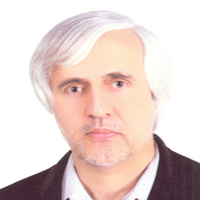Comparing two levels of closed system suction pressure in ICU patients: Evaluating the relative safety of higher values of suction pressure
Author(s):
Abstract:
Background
Endotracheal suctioning (ETS) is one of the most common supportive measures in intensive care units (ICU). ETS may be associated with complications including hypoxia and tachycardia. Closed system suctioning (CSS) decreases the rate of cardiorespiratory complication mainly due to continuation of ventilatory support and oxygenation during procedure. CSS has questionable efficacy, therefore higher values of negative pressure has been recommended to enhance the efficacy of CSS. This study was designed to evaluate the effects on gas exchange of 200 mmHg suctioning pressure compared with 100 mmHg in CSSMaterials And Methods
Fifty mechanically ventilated (MV) ICU patients were selected for the study. Two consecutive ten seconds CSS using suction pressures of 100 and 200 mmHg, in random order applied in each subject with the two hours wash out period. Effects of two levels of suction pressure on gas exchange were measured by recording the SPo2 values at 4 times.Results
Repeated measure analysis of variance didn’t show any significant difference between two levels of pressure (P = 0.315), but within each groups (100 and 200 mmHg) SPO2 changes was significant (P = 0.000). There was a mild but significant and transient increase in heart rate following both suction pressures, but no significant difference between two groups.Conclusion
The results show that CSS with suction pressure 200 mmHg has no detrimental effect on cardiorespiratory function of MV ICU patients. Since the safety of 200 mmHg suctioning pressure was approved, using 200 mmHg suction pressures is recommended for ETS of MV patients.Keywords:
Language:
English
Published:
Iranian Journal Of Nursing and Midwifery Research, Volume:18 Issue: 2, Mar-Apr 2013
Page:
117
https://www.magiran.com/p1228991
سامانه نویسندگان
مقالات دیگری از این نویسنده (گان)
-
Estimating the best fraction of inspired oxygen for calculation of PaO2/FiO2 ratio in acute respiratory distress syndrome due to COVID?19 pneumonia
Leila Kadkhodai, , Mohammadreza Habibzadeh, Babak Alikiaii, Seyed Jalal Hashemi
Journal of Research in Medical Sciences, May 2022 -
Expanding unilateral lung collapse using airway pressure release ventilation applied independently to the collapsed lung through the double‑lumen endotracheal tube
*
Journal of Research in Medical Sciences, Jan 2022


